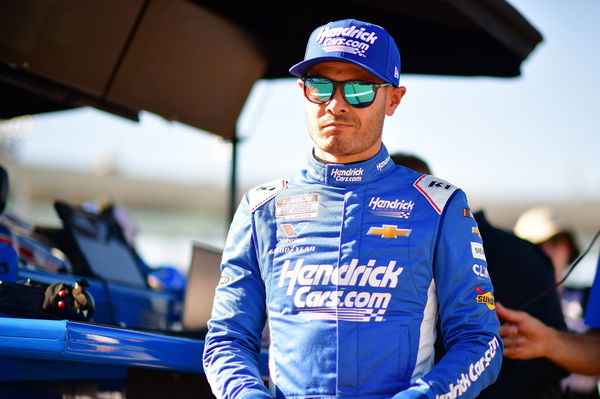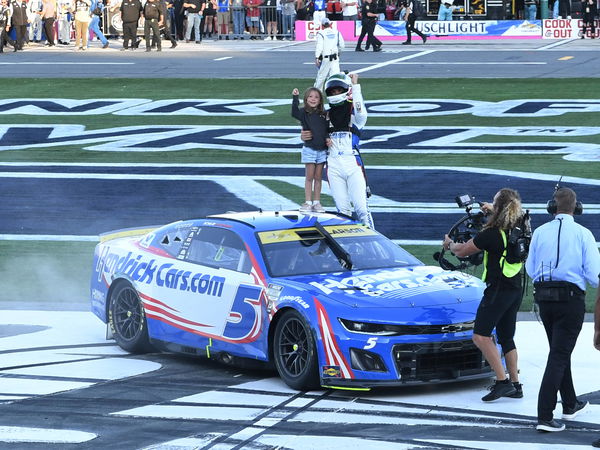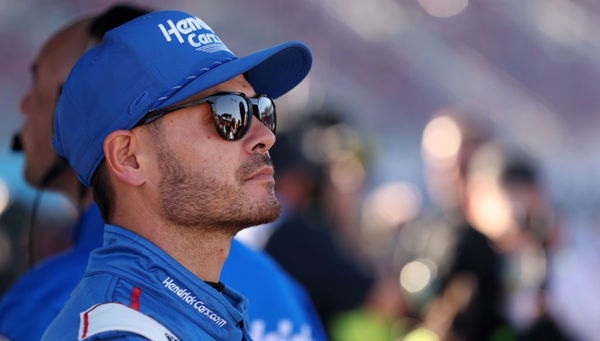
Imago
NASCAR, Motorsport, USA Cup Series-Qualifying Nov 1, 2025 Avondale, Arizona, USA NASCAR Cup Series driver Kyle Larson 5 during qualifying at Phoenix Raceway. Avondale Phoenix Raceway Arizona USA, EDITORIAL USE ONLY PUBLICATIONxINxGERxSUIxAUTxONLY Copyright: xGaryxA.xVasquezx 20251101_gav_sv5_005

Imago
NASCAR, Motorsport, USA Cup Series-Qualifying Nov 1, 2025 Avondale, Arizona, USA NASCAR Cup Series driver Kyle Larson 5 during qualifying at Phoenix Raceway. Avondale Phoenix Raceway Arizona USA, EDITORIAL USE ONLY PUBLICATIONxINxGERxSUIxAUTxONLY Copyright: xGaryxA.xVasquezx 20251101_gav_sv5_005
The NASCAR Cup Series wrapped up at Phoenix Raceway, where Kyle Larson clinched his second title by defeating Denny Hamlin, who led all season with the most wins and also led the most laps in the finale. “The way our format is, you know, it comes down to one race, four drivers, but you just have to beat the other three,” Larson reflected recently, capturing the immense over-importance of merely one race to decide the championship. Bear in mind that these words echo a growing frustration in the garage.
Watch What’s Trending Now!
Denny Hamlin’s heartbreak and Connor Zilisch’s near-miss in the final highlighted how all-season dominance has zero value in the most important race. And with NASCAR looking to tweak its championship format in 2026, drivers like Larson’s take on the current structure hold weight.
ADVERTISEMENT
Kyle Larson pushes for a significant change in the NASCAR format
Kyle Larson didn’t hold back about NASCAR’s playoff climax on the Rubbin Is Racing podcast. “I don’t think there’s ever a clear 100%, you know, perfect format that everybody in the world is going to agree on,” he said. “But I think what we can all agree on, and I think what, you know, Sunday may be approved that we need more than one race. Yes. Whether that is 36 or 10 or four or whatever the number is, it should be more than one because of moments like that.”
Larson‘s point landed firmly after the finale at Phoenix, where a lap 310 caution flipped the script. He pitted for two tires and restarted five spots ahead of Hamlin (Hamlin started 10th). That call sealed his title without leading a lap, underscoring how chaos in one single race can override a year’s consistency.
For a driver like Larson, who led the playoffs in points despite just three wins, it proved the format’s ‘luck’ vibe, which is great for TV ratings and upsets but logically not fair. “You can. I’ve led so many races at Homestead, so many laps. And I’ve only got two wins to show for it,” he noted. This take by Larson showcases Hamlin‘s final run; after winning the second stage and battling a flat tire, one yellow flag erased his edge.
ADVERTISEMENT

Imago
CHARLOTTE, NC – OCTOBER 13: Kyle Larson 5 Hendrick Motorsports HendrickCars.com Chevrolet and his daughter Audrey celebrate after the running of the NASCAR, Motorsport, USA Cup Series Bank of America ROVAL 400 on October 13, 2024, at Charlotte Motor Speedway in Concord, NC. Photo by Jeffrey Vest/Icon Sportswire AUTO: OCT 13 NASCAR Cup Series Bank of America ROVAL 400 EDITORIAL USE ONLY Icon2410133828
Critics argue this format destroys the sport’s roots in endurance, where icons like Richard Petty claimed seven titles by being consistent over full seasons. NASCAR’s top officials are also feeling the heat to make the change. President Steve O’Donnell addressed it head-on at a pre-championship presser: “Something that as you look at the future of the sport, making sure that a driver who has delivered all season long has the ability to be named a champion and not have something maybe come down to one race. That’s really been the focal point.”
ADVERTISEMENT
Steve O’Donnell’s words stem from more than a decade of elimination-style playoffs, which were implemented in 2014 to increase late-season intensity. However, these playoffs are now blamed for softening narratives.
Take Hamlin’s six victories or Zilisch‘s ten victories in the O’Reilly Auto Parts Series, where they fueled storylines all year, only for Phoenix to rewrite them. While O’Donnell aims to blend wins with a broader performance sample to crown the champion without sacrificing drama, Larson’s spotlight draws fresh scrutiny to his garage persona.
ADVERTISEMENT
Larson ducking the ‘villain’ tag!?
Kyle Larson’s championship glow has fans divided, especially following Denny Hamlin’s tears at Phoenix, which turned him into a favorite overnight. The latter has long been tagged as NASCAR’s villain. However, his loss in the finale and the narrative of having an ill father earned him sympathy from fans.
But Larson avoided the brewing rivalry narrative. It comes after years of Hamlin’s podcast jabs painting him as the series’ heel, much like Kyle Busch’s “Rowdy” era. However, the 2025 finale flipped the script. His raw post-race emotion, including hugging his daughter and congratulating his rival, earned him respect.
“I think it takes a moment where you got to get into somebody that the fans like,” Larson said when pressed on putting on the black hat himself. He nodded to past feuds, like Busch‘s dust-ups or Chastain’s 2022 wall-riding controversies that produced instant villains. For Larson, whose clean 2021 title run earned him universal cheers, the villain label won’t stick easily.
ADVERTISEMENT

Kyle Larson’s off-track dirt racing and family-man vibe keep him relatable, even as critics whisper “Larsony” for his strategic masterstrokes. Hamlin’s pivot from foe to fan favorite, Larson suggested, arises from vulnerability. And this proves NASCAR thrives on these emotional moments, not manufactured beef.
“But I think after the heartbreak of this weekend for him, he’s probably won over a lot of fans because of it too,” Larson added.
This echoes Dale Earnhardt’s pre-1998 redemption, where losses built a majority of fans’ emotions for him before his Daytona breakthrough. As 2026 looms with a format tweak, their dynamic might evolve from tension to mutual respect, keeping the series’ heartbeat strong.
ADVERTISEMENT
ADVERTISEMENT
ADVERTISEMENT

